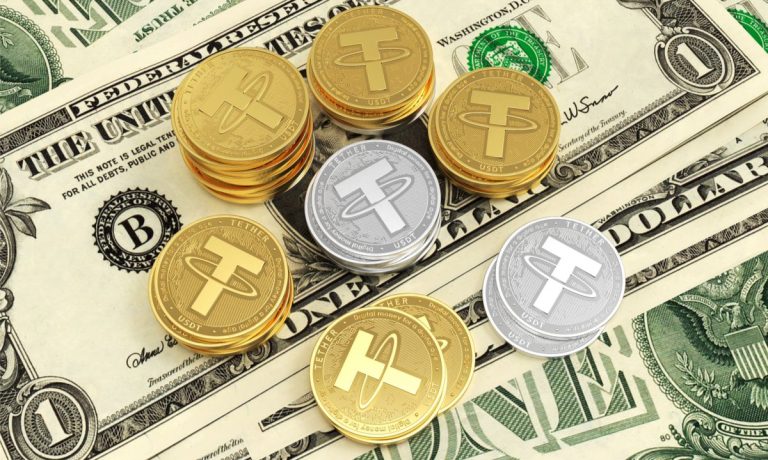
Tether’s day of reckoning could be approaching, and if the top stablecoin issuer cannot calm years-long doubts about the state of the cash reserves backing its dollar peg, an $80 billion run could be coming.
With the cryptocurrency market already nearing panic, a run on Tether’s USDT stablecoin would be catastrophic, with the potential to cripple the entire crypto market.
Concerns last month about the solidity of its backing reserve led to comparisons between a run on USDT and money market fund Reserve Primary Fund breaking the buck in 2008 in the wake of the Lehman Brothers collapse.
By far the No. 1 stablecoin, with almost $80 billion worth of USDT in use, Tether’s dollar-pegged token is the lubricant of the crypto trading market, used to provide steady and reliable liquidity when buying and selling volatile cryptocurrencies.
While Tether is no longer as dominant as it was — Circle’s USD now has a $54 billion market cap — stablecoins are used in nearly every trade, and are particularly useful for on- and off-ramping funds. Without them, trading crypto would become far slower, pricier and more subject to volatility.
Everything’s Fine
On Wednesday (June 15), Tether was forced to put out a statement vigorously denying rumors that the investments in the reserve fund backing the USDT dollar peg were not heavily backed by illiquid Asian commercial paper — a type of short-term corporate debt — selling at a steep discount. It also denied any losses in the collapse of crypto lending platform Celsius, which halted withdrawals on Monday (June 13), helping kick off the current market panic that has seen bitcoin hovering too close to the psychologically important $20,000 mark for comfort.
“These rumors are completely false and likely spread to induce further panic in order to generate additional profits from an already stressed market,” Tether said, adding that 47% of its reserves are now in U.S. treasuries and that commercial paper holdings have been cut to less than 25%.
Read more: Crypto Crisis Evokes Memories of Hedge Fund’s Market-Crippling 1998 Crash
While this particular round of rumors are very likely false, concern about Tether’s reserves is not a far-fetched one. USDT broke the buck back in May when the No. 3 stablecoin, terraUSD, collapsed, wiping out $45 billion.
See here: $45B Stablecoin Rout Confirms Worst Fears about Crypto’s Need for Reserves
And while USDT has never been far under par — it’s been around $0.999 until this week when it briefly dropped to $0.9975, and is now stuck around $0.998 — it has not managed to get all the way back to its dollar peg since.
Another, much smaller, stablecoin, USDD, is in worse shape. A second run could cause concerns about the stability of stablecoins in general to grow into a serious problem, potentially exacerbating a wider crypto panic.
Read here: Stablecoins’ Wobbly Dollar Pegs Add to Crypto Market Chaos
Trust Matters
The problem is, Tether has an Achilles’ heel: a trust problem going back well beyond the 2020-2021 bitcoin boom that made crypto a household word, and convinced 23% of American consumers — almost 60 million — to at least experiment with crypto, according to PYMNTS’ recent U.S. Crypto Consumer study.
Bigger questions about the existence of its reserve blew up when the company settled a lawsuit by the New York Attorney General for $18.5 million, and finally released details — but not a full outside audit — of its reserves.
See more: In US First, NY Requires Stablecoins to Be Backed by Cash
The audit revealed a cash reserve of less than 2% in, and nearly half (49%) in commercial paper that gave better returns than dollars in a bank account — secure enough, but of questionable liquidity. And without the market’s trust that one USDT can be redeemed for $1 on demand, a run would result.
“The composition of USDT’s reserves has long since been an area of concern in the crypto market, with questions specifically surrounding the nebulous ‘commercial paper,’ crypto news outlet CoinDesk noted Wednesday in covering Tether’s denials.
The fear of such a stablecoin run has been raised by U.S., EU and other financial market regulators, which worry that it could expand into the larger economy. That anxiety has pushed stablecoin regulation to the top of the crypto regulation agenda.
More here: Push to Regulate Stablecoins Gains Momentum as TerraUSD Spirals
U.S. Treasury Department Under Secretary for Domestic Finance Nellie Liang told the House Financial Services Committee on Feb. 8 that, based on the “public documents that they post,” her understanding is Tether’s “reserve assets include assets that are not credit risk free.”
You may like: House Committee Voices Concerns Over Stablecoin’s Effect on Dollar
If that belief grows in a panicky crypto market, a real meltdown could occur.
Sign up here for daily updates on all of PYMNTS’ Crypto coverage.